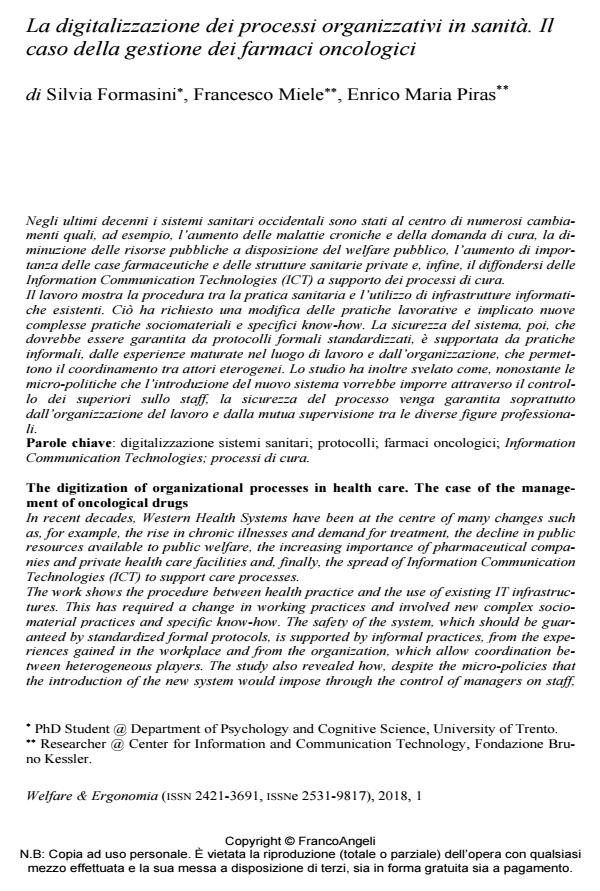The digitization of organizational processes in health care. The case of the management of oncological drugs
Journal title WELFARE E ERGONOMIA
Author/s Silvia Formasini, Francesco Miele, Enrico Maria Piras
Publishing Year 2019 Issue 2018/1
Language Italian Pages 17 P. 103-119 File size 448 KB
DOI 10.3280/WE2018-001006
DOI is like a bar code for intellectual property: to have more infomation
click here
Below, you can see the article first page
If you want to buy this article in PDF format, you can do it, following the instructions to buy download credits

FrancoAngeli is member of Publishers International Linking Association, Inc (PILA), a not-for-profit association which run the CrossRef service enabling links to and from online scholarly content.
In recent decades, Western Health Systems have been at the centre of many changes such as, for example, the rise in chronic illnesses and demand for treatment, the decline in public re-sources available to public welfare, the increasing importance of pharmaceutical companies and private health care facilities and, finally, the spread of Information Communication Technologies (ICT) to support care processes. The work shows the procedure between health practice and the use of existing IT infrastruc-tures. This has required a change in working practices and involved new complex socio-material practices and specific know-how. The safety of the system, which should be guaran-teed by standardized formal protocols, is supported by informal practices, from the experi-ences gained in the workplace and from the organization, which allow coordination between heterogeneous players. The study also revealed how, despite the micro-policies that the intro-duction of the new system would impose through the control of managers on staff, the safety of the process is ensured mainly by the work organization and mutual supervision between the different professional figures.
Keywords: Digitization of health systems; protocols; oncological drugs; Information Com-munication Technologies; treatment processes.
Silvia Formasini, Francesco Miele, Enrico Maria Piras, La digitalizzazione dei processi organizzativi in sanità. Il caso della gestione dei farmaci oncologici in "WELFARE E ERGONOMIA" 1/2018, pp 103-119, DOI: 10.3280/WE2018-001006